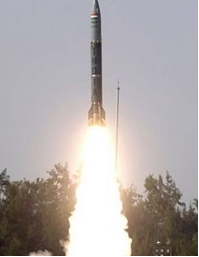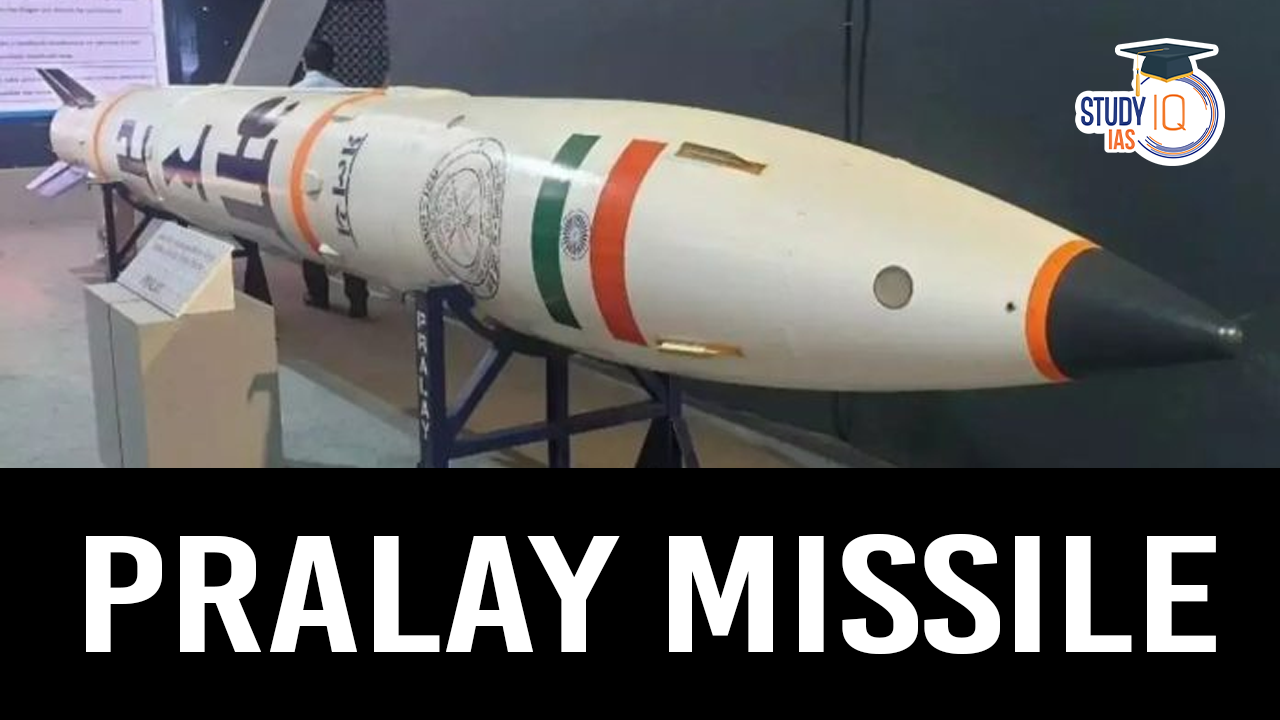Table of Contents
Context: DRDO successfully test-fired the Pralay missile from Abdul Kalam Island off the Odisha coast.
About Pralay Missile
Pralay, India’s first quasi-ballistic missile, represents a significant step forward in the nation’s defence technology. Developed by the Defence Research and Development Organisation (DRDO), Pralay combines advanced precision-guided technology with high-speed manoeuvrability, making it a formidable addition to India’s arsenal.
- It is powered by a solid-propellant rocket motor & is capable of carrying conventional warheads.
- Pralay complements BrahMos and Prahar missiles, which are already in the Indian missile inventory.
- Global Examples: Russia’s Iskander-M & China’s Dong Feng 12a
| Facts about Pralay Missile | |
| Type | Indigenous, short-range, quasi-ballistic missile. |
| Developed by | Defence Research and Development Organisation (DRDO), India |
| Range |
|
| Payload Capacity | 500–1000 kg |
| Propulsion |
Solid-propellant rocket motor |
| Launch Platform |
Canisterised launch system enabling rapid deployment and improved survivability |

Quasi-ballistic Features
- Flies at lower altitudes with a depressed trajectory
- Capable of mid-air manoeuvrability
- Difficult to detect and intercept due to reduced radar visibility and evasive flight path
Strategic Importance
- Counterforce Capability: Pralay provides India with an edge in striking high-value enemy targets, including missile silos, airfields, and logistics hubs.
- Deterrence: Its development strengthens India’s posture in maintaining regional stability and countering threats, particularly in contested areas.
- Indigenization: As a product of DRDO, Pralay showcases India’s growing self-reliance in advanced missile technology.
Quasi – Ballistic Missiles
- It combines features of traditional ballistic missiles and cruise missiles.
- Unlike pure ballistic missiles that follow a high-arcing trajectory, quasi-ballistic missiles:
- Manoeuvre mid-flight to adjust their path.
- Generally, they fly at a lower altitude, making them harder to detect and intercept.
Key Characteristics
- Speed: Travel at high speeds, often in the hypersonic range (Mach 5 or above).
- Stealth capacity: Can evade missile defence systems more effectively than standard ballistic missiles.
- Precision: Designed for greater accuracy, making them ideal for targeted strikes.
Warhead Options
- Anti-armour Warhead:
- Designed to destroy modern armoured vehicles
- Effective against Rolled Homogenous Armour (RHA) and Explosive Reactive Armour (ERA)
- Penetration-cum-Blast Warhead:
- Optimised for anti-bunker and hardened structure targeting
- Pre-fragmentation Warhead:
- Provides a wide lethality zone for anti-personnel and area denial operations
Additional Features
- Equipped with advanced guidance and navigation systems for high precision targeting
- Modular warhead configuration enables flexibility in targeting a wide spectrum of threats
Significance
Acts as a crucial component of India’s proposed Rocket Force, a tri-services integrated missile command aimed at strengthening India’s conventional deterrence capabilities.


 Advanced Air Defence Radars: Types, Comp...
Advanced Air Defence Radars: Types, Comp...
 Ion Chromatography, Working and Applicat...
Ion Chromatography, Working and Applicat...
 Broadly Neutralising Antibodies (bNAbs):...
Broadly Neutralising Antibodies (bNAbs):...

























